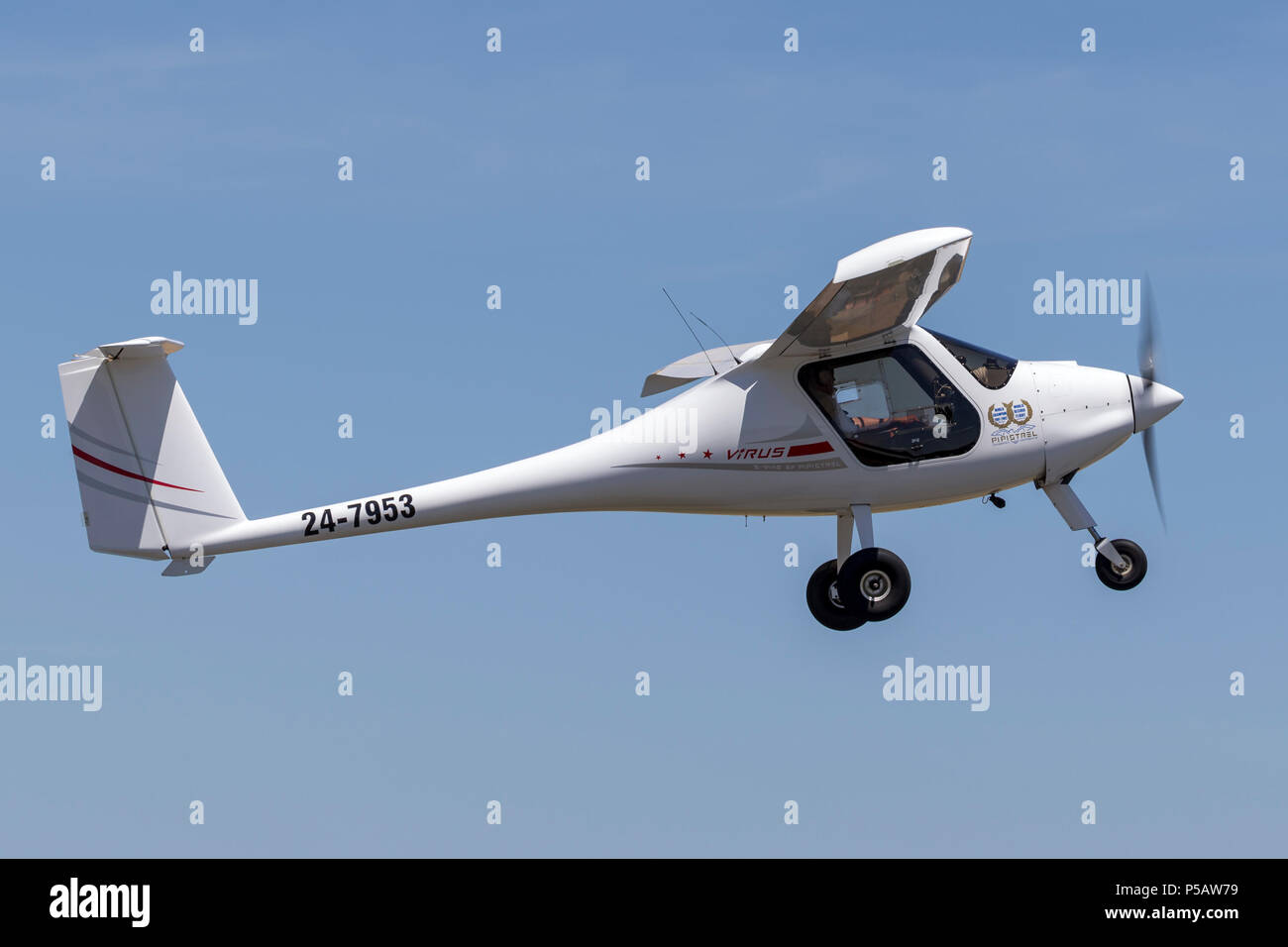Pipistrel Light Sport Aircraft - The Pipistrel Virus is a two-seat, single-engine light aircraft manufactured by Pipistrel in Slovenia and Italy and sold as an ultralight, home kit or light sport aircraft.
Introduced in 1999 and based on the Pipistrel Sinus design, the Virus was produced in several variants with different wings, wingspans and undercarriage configurations. It can be equipped with a complete parachute system for emergency recovery.
Pipistrel Light Sport Aircraft
It is a high-wing cantilever monoplane with a T tail and air brakes. The cabin has two seats side by side. This fixed chassis can be offered in a tricycle or rear wheel configuration. It is available as a long-wing version (12.5 meters wingspan) powered by an 80 hp (60 kW) Rotax 912 engine or a short-wing "SW" version (10.7 meters wingspan) equipped with more Rotax 912 and Rotax options With 912. 914 giant.
Pipistrel To Move Some Production To Italy Due To Threat Of Nationalisation
Aviation journalist Paul Bertorelli criticized the plane's design for not being robust for cabin passengers. However, the manufacturer points out that such a problem is typical for LSA category aircraft. The design did not experience any head injuries during the accidents that occurred.
The SW 121 is powered by the Rotax 912 S3 and is designed to meet EASA light sport aircraft requirements. It is the first EASA type (unrestricted, "ordinary" category) CS-LSA category aircraft for visual flight rules (VFR) night flights, deliberate turns and glider towing. It has an autopilot, two redundant ADAHRS units and air brakes.
In January 2022, Pipistel announced a new variant of the SW 121, commercially named Explorer. The new variant, which is also EASA type-certified, features, among other things, new touch-sensitive avionics and a haptic stall warning system.
The Pipistrel Virus first flew on August 10, 1999. Production began on January 20, 2000.
Pipistrel Virus Sw 121 Light Aircraft, Slovenia
The virus won NASA's 2007 Personal Aircraft (PAV) Challenge and 2008 General Aviation Technology (GAT) Challenge.
On January 8, 2012, Slovenian pilot Matevž Larčič launched a turbocharged Virus SW914 under the auspices of GreLight World Flight on a round-the-world trip from Slovenia. During the flight, he flew over Mount Everest at an altitude of 8,944 m (29,344 ft), about 90 m (300 ft) from the summit; this part of the trip was not allowed because Nepal canceled the flight permit just before take off.
He completed the flight on 19 April 2012, returning to Slovakia, claiming to be the first person to complete such a flight without a co-pilot and having flown 100,000 km (62,000 mi) during the journey.

On 12 October 2015, Pipistrel won an international tender issued by the Ministry of Defense of India for the procurement of 194 light trainers for the Indian Air Force (72 aircraft), the Indian Navy (12 aircraft) and the National Cadet Corps (110 aircraft).
Textron's Acquisition Of Pipistrel Lifts Electric Aviation Off The Tarmac
The two-seater Pipistrel Virus SW 80, known as Garud after the bird in Hindu mythology, will be used for aviation safety and training of air wing cadets.
A special variant of the SW 80 was developed for the Indian Ministry of Defense in 2015. By September 2019, 194 units were produced and delivered.
The SW 100 cruises at 273 km/h (170 mph), which is 24 km/h (15 mph) faster than the 80 hp (60 kW) long-wing version.
Short-wing version equipped with a Rotax 912 iS engine of 100 hp (75 kW) with direct fuel injection and electronic engine management. Compared to the SW 100, fuel consumption is reduced by 13% and range is increased by 18%.
Pipistrel Velis Electro Review 2023
EASA type certified model in CS-LSA category. Short-wing version powered by a 100 hp (75 kW) Rotax 912 S3 engine.
Based on the SW 121 but with a 100 hp (75 kW) Rotax 912 ULS engine, it is the first aircraft certified under the new German LTF-UL2019 rules for the 600 kg microlight category.
The first electric aircraft to receive EASA certification on June 10, 2020. Powered by a 76 HP (58 kW) electric motor developed by Emrax, it offers a payload of 170 kg and a cruising speed of HRK 90 (170 km/h). and lasting 50 minutes. Pipistrel plans to deliver over 30 examples in 2020 for use as training aircraft.

Aircraft appraisal online, free aircraft appraisal, aircraft appraisal services, aircraft appraisal cost, aircraft appraisal jobs, aircraft appraisal course, aircraft appraisal training, business appraisal, rolex appraisal, appraisal software, 409a appraisal, aircraft appraisal report
Post A Comment:
0 comments so far,add yours